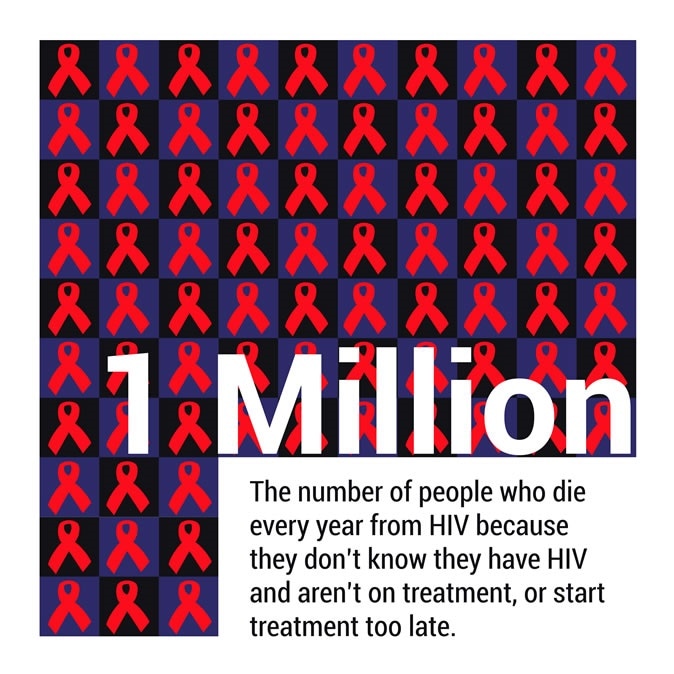A new report has found that there is an HIV epidemic across Europe especially in Eastern Europe. The new diagnoses rose in 2017 the report said but the speed of rise has slowed. The report was released by the European Center for Disease Prevention and Control and the WHO Regional Office for Europe.
The report finds that there have been 160,000 new diagnosis in 2017. The reports were highest in the Eastern European region at 130,000. The report states that in the East there are 51.1 new cases diagnosed per 100,000 people while there are 6.4 new cases per 100,000 people and 3.2 diagnoses per 100,000 people in Central Europe. The report calls the rates in Eastern Europe “disproportionately higher”. There is a 68 percent rise since 2008 in the region, the report adds.

Further Russia reported a very high rate of new diagnosis at 71 new cases per 100,000 people. Ukraine and Belarus followed closely. Over the last 30 years there have been over 2.32 million HIV diagnoses in Europe and according to WHO 36.9 million people are living with HIV across the world in 2017. Of these Africa seems to be the worst hit with 25.7 million HIV positive individuals in 2017.
The WHO and the Joint United Nations Programme on HIV/AIDS has targeted “90-90-90 target by 2020” which means 90 percent of HIV positive people being diagnosed and 90 percent people to be provided with antiretroviral therapy and 90 percent of those treated achieve viral suppression. This target is part of the “Sustainable Development Goal of eliminating HIV in Europe, and worldwide, by 2030.”
Dr. Masoud Dara, coordinator of communicable diseases and HIV team lead at WHO Europe in a statement said, “We are quite far behind achieving those targets, particularly in Eastern Europe and Central Asia. The significance in this report is that we can see a sharp difference between Eastern Europe and the European Union where the number of HIV infection numbers is dropping.” The report adds that to meet these targets the infection rates need to come down to 78 percent by 2020.
According to Dara the main reasons behind high rates of HIV in Eastern Europe is the lack of adequate preventive strategies. He said, “The most important thing is to make sure that people ... injecting drug users, commercial sex workers and men who have sex with men have good preventative measures in place. For injecting drug users, they need to have clear needle exchange programs. We do not have many of these in Eastern European countries as opposed to Western Europe.” He also added that early testing of HIV is essential to prevent transmission. Treatment of HIV positive patients and preventing transmission is the key to bringing down numbers he said. While unprotected male homosexual sexual intercourses remain the main cause of transmission in European Union and European Economic Area, intravenous drug use and heterosexual sex was the main mode of HIV transmission in Eastern Europe, the report stated. Around 59 percent of cases in Eastern Europe are due to heterosexual contact the report finds.
WHO Regional Director for Europe Zsuzsanna Jakab has called forth the governments to “scale up” their responses. There should be adequate investments in prevention, treatment and detection, the report adds. Dr. Anton Pozniak, president of the International AIDS Society also called for removal of the stigma around HIV AIDS. “Policies that reduce social marginalisation, stigma and discrimination are needed as are increased funding for prevention and testing… In the East, particularly in Russia, the shift away from progressive policies towards socially conservative legislation is a barrier to implementing HIV prevention and treatment,” Pozniak said in a statement.
Vytenis Andriukaitis, the European Commissioner for Health and Food Safety, in a statement said, “Despite our efforts, HIV still damages the lives of so many people, and causes not only much suffering and illness, but also discrimination and stigmatisation. A lot of progress has been made, but there is still much more we must do. We need to capitalise on the full potential of our joint and sustained actions, as well as increased collaboration with our partners across borders if we want to achieve the Sustainable Development Goal of eliminating HIV – in Europe and worldwide – by 2030.”
These data and reports along with the warnings come ahead of the World AIDS Day on December 1.
WHO: "In our hands" - HIV self-testing in Malawi - Short version